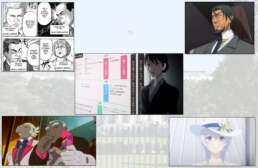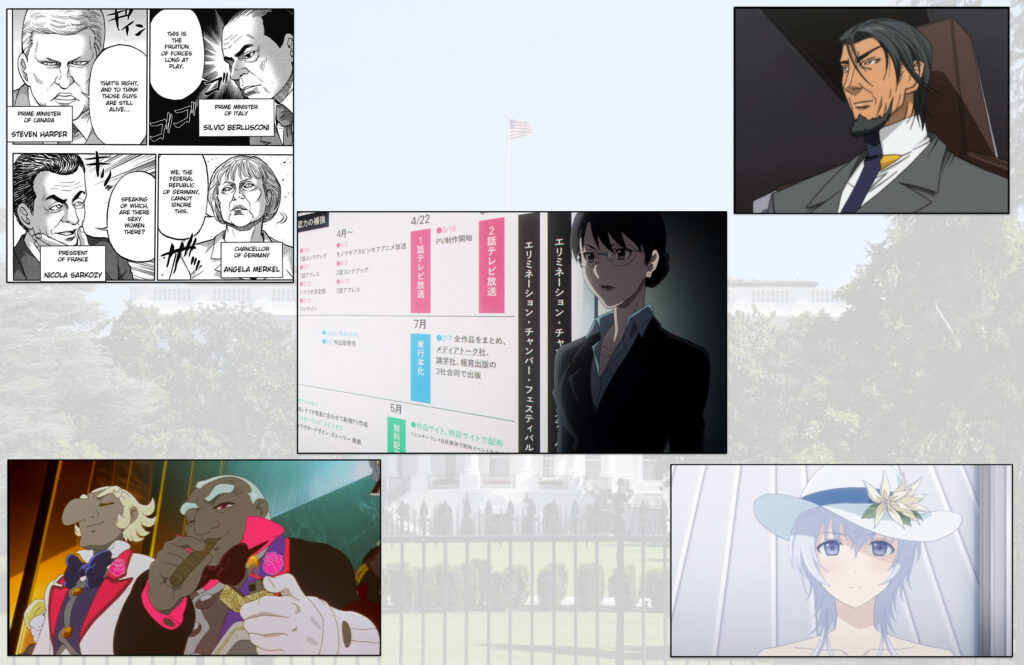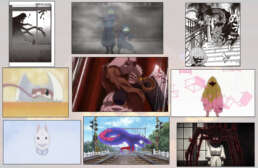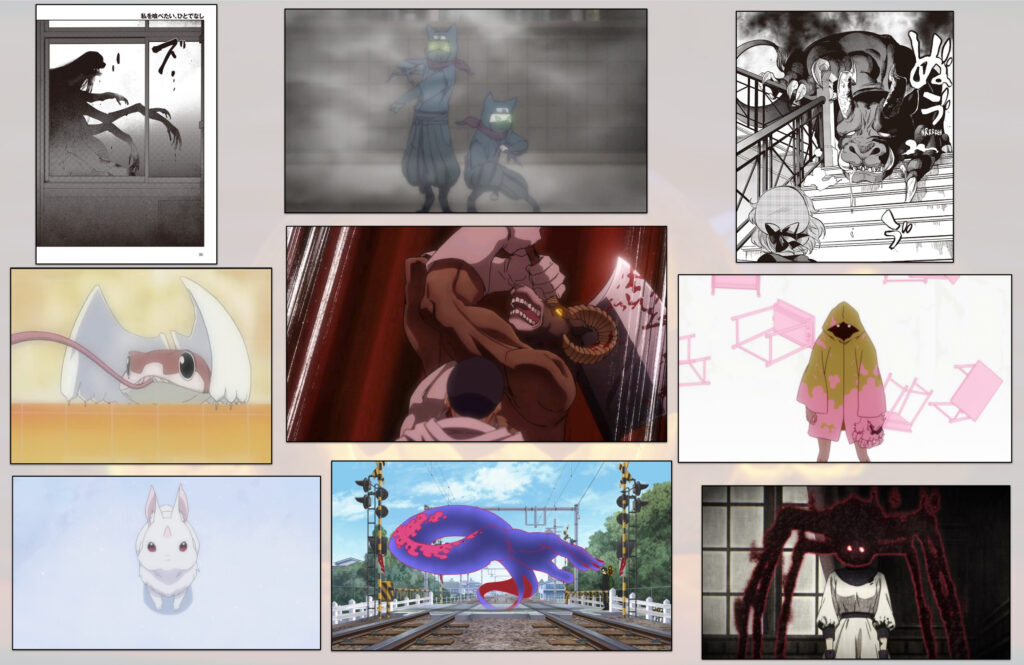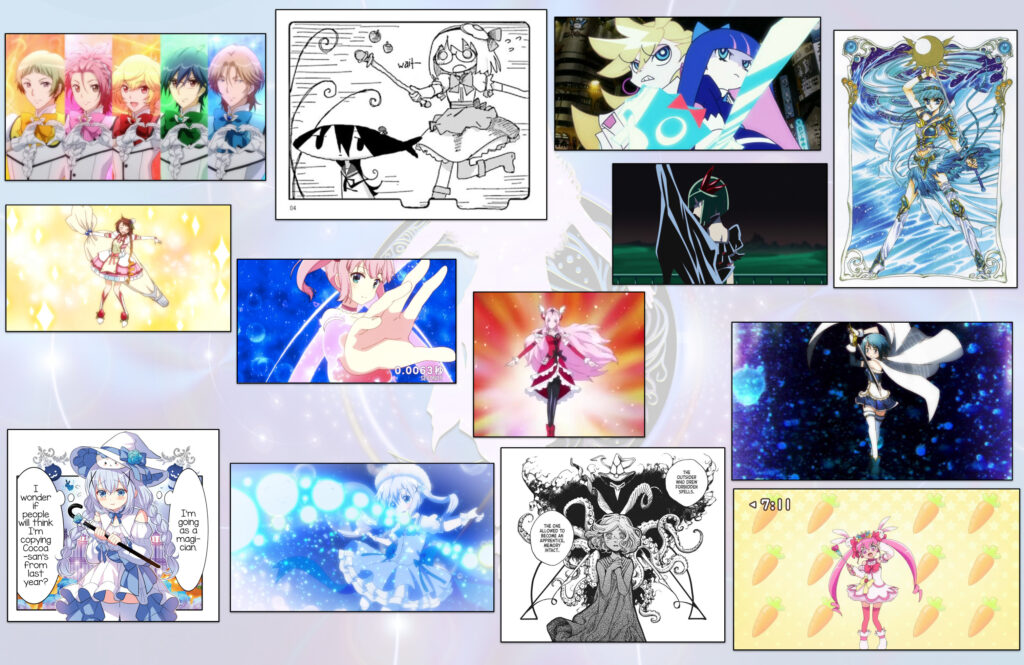Anticipated Anime of 2025
2024 was a pretty good year for anime. There was a cool mix of returning favorites like Sound! Euphonium, Spice and Wolf, and Frieren: Beyond Journey’s end as well as some of off the wall oddball shows that weren’t afraid to be different. Brave Bang Bravern, Train to the End of the World, and Too Many Losing Heroines kept things fun and zany all year. Then there was Dandadan’s own form of insanity to round out the year.
Next year is looking pretty interesting, as well. My list of things to watch in 2025 includes some new entries in classic mecha franchises, continuations of great fantasy series, and a couple of new works that show promise. In no particular order, here’s the anime I looking forward to.
New Macross
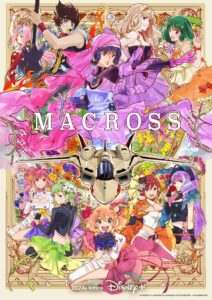 There’s a new entry coming in the Macross franchise. And it’s interesting for two reasons even though almost nothing is yet known about it.
There’s a new entry coming in the Macross franchise. And it’s interesting for two reasons even though almost nothing is yet known about it.
First, it was a big surprise to hear who this new show was coming from. As a 40+ year old franchise, multiple studios have worked on Macross over the years. A couple of the related shows were even made without authorization or input from the original creators! The most recent entires have been made by studio Satelight. But they’re going to be busy reviving their Aquarion franchise. That has seen production of the next Macross anime go to studio Sunrise! I put the exclamation mark there because although Sunrise has done everything from music idol Love Live to the jazz-filled sci-fi classic Cowboy Bebop, they are best known for making dozens of shows in the Gundam mecha franchise which is perhaps the closest thing to a competitor to Macross.
We don’t know who is directing this new Macross show. Or who is, very importantly, doing the music. We know almost nothing, so far. But having it developed by something of a rival studio is certainly interesting. And not necessarily a bad thing. I think Sunrise can be plenty capable of making a good Macross show. It’s going to come down to the leadership, tone, animation, and music. I mention music a second time because for various reasons from societal to technological, music has real power in the Macross universe. Music has literally stopped interstellar wars and pacified eldritch aliens, so which composer and singer(s) this new show features is perhaps more important than it would be for other sci-fi properties.
Second, when will this new Macross show will be set? Macross is fairly unique in that aside from a spattering of video games and maybe the odd side story or two, the mainline shows have all existed in a single continuity set from around a start in fictional 1999 to a little past a futuristic 2067. From a story perspective, each Macross show focuses on a new set of characters, but sometimes past events are referenced and past characters have even crossed over as importantly but minor characters in new shows. This means viewers don’t have to contend with a complicated mishmash of alternate universes and it simplifies questions as to where to start watching since there’s an actual beginning. Each new show is at least tangentially related to the ones that came before which I think of as a strength.
So, will this new entry move the timeline forward yet again? Will it be a sequel of a previous show? Or a side story set during the same time frame as an existing show? Or might it break tradition and be the first true alternate universe show? If I had my way, it would be a show set 10+ years forward of Macross Delta’s 2067 and again feature an entirely new set of characters. I’d also accept a continuation of my favorite entry, Macross Frontier. There’s one big plot thread left hanging there that would be great to finally wrap up. I don’t really want an alternate timeline. Leave that to Gundam and its myriad of disconnected yet annoyingly similar stories. (I’m look at you all you Char-masked villains!)
But no matter what happens, Macross is awesome and unique and I can’t wait to hear more about this new entry.
The Apothecary Diaries season 2
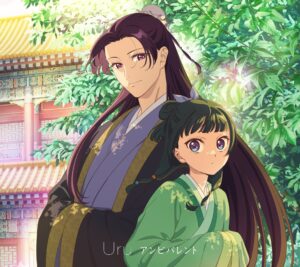 The first season of The Apothecary Diaries set in ancient China saw teenage apothecary and amateur herbalist Maomao be kidnapped and brought to work at the royal court. Through a mixture of accumulated knowledge, practical common sense, an occasional temper, and a bit of a devious streak, Maomao began fixing problems and solving mysteries among royal staff and concubines alike.
The first season of The Apothecary Diaries set in ancient China saw teenage apothecary and amateur herbalist Maomao be kidnapped and brought to work at the royal court. Through a mixture of accumulated knowledge, practical common sense, an occasional temper, and a bit of a devious streak, Maomao began fixing problems and solving mysteries among royal staff and concubines alike.
A bit of a goofball who even enjoys lightly poisoning herself to figure out the best way to counteract new poisons, Maomao found herself dragged into issues ranging from malnutrition to aphrodisiacs to novel forms of court politics and murder! Slowly, problem by problem, she grew her respect and reputation, much to her own annoyance. Just as often as not she’d rather these nobles leave her alone and solve their own problems, but her honest and inquisitive nature wouldn’t let her ignore the plights of others for long and she’d soon reluctantly get wrapped up in the intrigues herself.
The show was a lot of fun even as Maomao herself was kinda a weirdo. The upcoming second season promises to dig into more court intrigue and even more into Maomao’s secretive past that she is just beginning to uncover!
Ghost in the Shell by Science Saru
 Ghost in the Shell is always a bigger franchise than I give it credit for. It’s got two early movies. The three-ish seasons of the excellent Stand Alone Complex anime. The Ghost in the Shell: Arise mini series which I love and others love to hate. And the much maligned live action movie which was pretty terrible because it failed to understand the philosophy of Ghost in the Shell. (And not because of its casting choices, fight me!)
Ghost in the Shell is always a bigger franchise than I give it credit for. It’s got two early movies. The three-ish seasons of the excellent Stand Alone Complex anime. The Ghost in the Shell: Arise mini series which I love and others love to hate. And the much maligned live action movie which was pretty terrible because it failed to understand the philosophy of Ghost in the Shell. (And not because of its casting choices, fight me!)
This new entry by the always a bit odd production studio Science Saru has very few details out right now, but the initial teaser seemed to very clearly focus on the original manga leading some to speculate this will be a faithful retelling of those stories.
Even though I kinda don’t like roughly half of the entires of this franchise, it’s always interesting to see a new adaptation on the horizon. The core world and cyberpunk aspects of Ghost in the Shell are very solid. It all comes down to what is done with it this time. I’m especially interested to see what they do with the art given all the manga panels they were showing in the teaser and the retro bit of art Science Saru put out.
Witch Hat Atelier
 To be honest, I don’t know a ton about this upcoming fantasy series. It seems to be about magic, who has access to it and who controls it, and what good or bad is done with it.
To be honest, I don’t know a ton about this upcoming fantasy series. It seems to be about magic, who has access to it and who controls it, and what good or bad is done with it.
The trailer made it feel like something of a magical coming of age story as our young heroine maybe attempted to perform magic before being chased by those who didn’t want her to do so and then being saved by someone who could teach her secrets locked away or forgotten by the modern magical world. Something like that…
What I do know is people seem really excited about this show. I’ve seen more than a few say it is one of a big three of modern fantasy classics along with, I think, Jobless Reincarnation and Frieren: Beyond Joureny’s End. The former two are outstanding in their own ways (with Jobless Reincarnation adding a big dose of problematic just for kicks)… so I have high hopes for this one as well.
Mobile Suit Gundam GQuuuuuuX
 Gundam is not my favorite mecha franchise, that would be Macross from up above. I’ve tried getting into Gundam over and over and it has never really stuck. Something about a combination of its age, weird plots, overuse of heavily repeated themes and callback similarities between series, and the pile of one off universes disconnected from all the others has me slightly negative on the franchise as a whole.
Gundam is not my favorite mecha franchise, that would be Macross from up above. I’ve tried getting into Gundam over and over and it has never really stuck. Something about a combination of its age, weird plots, overuse of heavily repeated themes and callback similarities between series, and the pile of one off universes disconnected from all the others has me slightly negative on the franchise as a whole.
That said, I enjoyed 2022’s The Witch from Mercury even if it was a bit rushed in places. This new series, GQuuuuuuX, so far seems intriguing with a second go at a main female protagonist and a weirdly named main mech (which may or may not actually be a Gundam) that is initially involved in combat for sport rather than for war. War seems to be coming, though. It’s as much a core part of Gundam as music is for Macross.
Really the whole package here has me intrigued. It could totally be another entry I can’t stand with too many reused tropes from past Gundam anime, but there’s enough here for me to give it a real chance. I look forward to learning more and I hope it turns out of be some cool robot sci-fi I can really get behind.
Madoka Magica Walpurgisnacht Rising
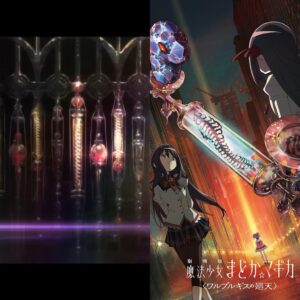 Madoka Magica is a landmark anime. It takes traditional magical girl shows which typically feature one or more girls with magical abilities fighting against evil using the powers of hope and friendship. Madoka turned the whole concept on its head in the most devious way and then did something even neater. It takes its subversive messages of despair overwhelming hope and brings them back around to the beginning. Where it seemed to be an unrelenting critical deconstruction railing against traditional magical girl shows it actually executed another perfect flip to become the best and truest of them all.
Madoka Magica is a landmark anime. It takes traditional magical girl shows which typically feature one or more girls with magical abilities fighting against evil using the powers of hope and friendship. Madoka turned the whole concept on its head in the most devious way and then did something even neater. It takes its subversive messages of despair overwhelming hope and brings them back around to the beginning. Where it seemed to be an unrelenting critical deconstruction railing against traditional magical girl shows it actually executed another perfect flip to become the best and truest of them all.
Then they did the 3rd movie, Rebellion. (The first two were just recaps of the anime). Some, like me, loved it. It could be argued that it steadfastly and honestly follows the thought processes and inclinations of some of the core characters to their logical and impressively destructive conclusions. Others, also like me, think it messed with perfection. That it undid an extremely well earned and meaningful ending.
Yes, I am of both opinions! But while Rebellion is divisive, it cannot be denied that it was an amazing production. Its pacing and animation and music were all top notch. This new movie looks to up things yet again. From what we’ve seen in trailers, it looks and sounds fantastic. There’s mysteries and intrigue and “why the heck is that person there?!” and “oh no, what does that mean?!!” for big fans like me to puzzle over.
Will this new movie be accepted? Will it upend things yet again? Will it become a core part of the show’s story? Will it be something that some love and some hate? Will it be a complete failure rejected and forgotten? Nobody knows! The chance to see a favorite work soar high or come crashing down is one of the big reasons for me to anticipate this one.
Lycoris Recoil Shorts & Season 2
 In modern day Japan, the government rounds up orphan girls and trains them as deadly peacekeeping assassins who preemptively eliminate crime and terrorism before they can be carried out. These “Lycoris” do their deadly work disguised as everyday schoolgirls. The original show followed two such Lycoris, the joyfully hyperactive and endlessly helpful Chisato Nishikigi who has reflexes so good you literally cannot shoot her, and Takina Inoue, a highly skilled, no-nonsense Lycoris who was demoted to be Chisato’s partner because of her inflexible nature.
In modern day Japan, the government rounds up orphan girls and trains them as deadly peacekeeping assassins who preemptively eliminate crime and terrorism before they can be carried out. These “Lycoris” do their deadly work disguised as everyday schoolgirls. The original show followed two such Lycoris, the joyfully hyperactive and endlessly helpful Chisato Nishikigi who has reflexes so good you literally cannot shoot her, and Takina Inoue, a highly skilled, no-nonsense Lycoris who was demoted to be Chisato’s partner because of her inflexible nature.
The show thrived on Chisato’s antics, her kindness, her incredible close combat gun-fu, her imperative to live each day to its fullest, and her unshakable philosophy of ultra-aggressive pacifism that saw her outright refuse to kill even the baddest bad guy, but at the same time gave her full leeway to shoot them with painful non-lethal bullets so often that they’d have no choice but to rethink their actions. Add in Takina as the straight-laced buddy cop Chiasto got to play off of and a wonky, Joker-like villain to stir up trouble and you got a surprisingly excellent show that came out of nowhere!
This year, we should be getting some new shorts that follow the continued activities of Chisato and Takina. Maybe they’ll still be defying their covert organization by providing problem solving services in Hawaii. Maybe they’ll be back at their little LycoReco cafe in Japan where they’d pick up odd jobs helping manga artists gain inspiration or helping police detectives solve cases. Whatever they do, it’s bound to be fun. There’s also talk of a full second season that I think is more or less confirmed but maybe not officially announced. That’ll be great too!
Symphogear Next
 Symphogear is kinda a crazy concept. Take your typical magical girl anime, but instead of having these high school girls gain superpowers through magical means, have those powers come through the power of songs in combination with a mixture of ancient human and alien technology. These heroines literally sing out loud during battles to power their fights against evil biological weapons spawned from another dimension not to mention the bad guys who would wield such abominations against humanity for their own gain.
Symphogear is kinda a crazy concept. Take your typical magical girl anime, but instead of having these high school girls gain superpowers through magical means, have those powers come through the power of songs in combination with a mixture of ancient human and alien technology. These heroines literally sing out loud during battles to power their fights against evil biological weapons spawned from another dimension not to mention the bad guys who would wield such abominations against humanity for their own gain.
The show has over 100 character songs, terrific action scenes, and a good helping of heart. Those things are what make Symphogear the outstanding anime it is. It’s one of those shows where everything from the character designs to the villains to the fights are all just a bit over the top in the best ways.
And now, after the solid, story-ending conclusion of its 5th season, it is getting… something new. And nobody knows what just yet. There’s some theories of a prequel show. Others of a sequel film. Like several of the other shows, I don’t know what’s coming, but I’m excited to see what it is!
Medalist
 Sports anime can occasionally be awesome. I don’t know much about this one other than it is about a young skater dreaming of someday competing in the olympics and her coach who helps her train for ice dancing competitions. Or something. The trailers have seemed interesting enough. I’m hoping this will be a surprise standout.
Sports anime can occasionally be awesome. I don’t know much about this one other than it is about a young skater dreaming of someday competing in the olympics and her coach who helps her train for ice dancing competitions. Or something. The trailers have seemed interesting enough. I’m hoping this will be a surprise standout.
The anime has a relatively young studio working on it, but has screenwriter Jukki Hanada famous for some great anime on board. He’s worked on the stories for some of my favorites including A Place Further than the Universe, Sound! Euphonium, Steins;Gate, and Girls Band Cry. This could be a good one if the art and animation can keep up with what will hopefully be a good story.
Frieren: Beyond Journey’s End Season 2
 The first season of this anime was outstanding. The show starts with the nearly ageless elven mage Frieren returning home as a member of the Hero’s Party of adventurers who defeated the demon king and made the world much safer for mankind. And then it explores what happens next. Frieren’s friends grow old and die while she stays the same. The world advances. New threats emerge. New friends, some related to those of her past, join her on a new adventure that retraces the footsteps and memories of the one she went on previously.
The first season of this anime was outstanding. The show starts with the nearly ageless elven mage Frieren returning home as a member of the Hero’s Party of adventurers who defeated the demon king and made the world much safer for mankind. And then it explores what happens next. Frieren’s friends grow old and die while she stays the same. The world advances. New threats emerge. New friends, some related to those of her past, join her on a new adventure that retraces the footsteps and memories of the one she went on previously.
The show mixes action, kindness, nostalgia, magic, great animation and music, amazing characters, and a bit of humor all to perfect effect. Part of its appeal is its brilliance in its simplicity. And now we know it is getting a second season. And while it’s not my absolute favorite anime of all time, it’s right near the top and deserves all the praise that has been heaped on it.
AniManga Picture Challenge Week 20: Winter
Winter wonderlands and snowy shenanigans dominated this week's #anime and #manga #AniMangaFoundIt #AniMangaPictureChallenge.
My Little Ponfarr - Fruits Basket
Ragashingo - Fate/Zero
Anicast - You Are Ms. Servant
chikorita157 - Is the Order a Rabbit? BLOOM
Tatsumeg - Toradora
Thanks to everybody who participated! :)

AniManga Picture Challenge Week 19: Out of Money
This week on the #AniMangaFoundIt #AniMangaPictureChallenge, we were flat broke. Thanks to all who showed off examples of #anime and #manga characters who were out of money.
My Little Ponfarr - A Salad Bowl of Eccentrics
Nikelui - Loner Life
chikorita157 - The Great Jahy Will Not Be Defeated!
Ragashingo - Kakegurui
Mole - Given
Tatsumeg - Nigen Fushin
Anicast - Laid Back Camp
Rei - Blue Box
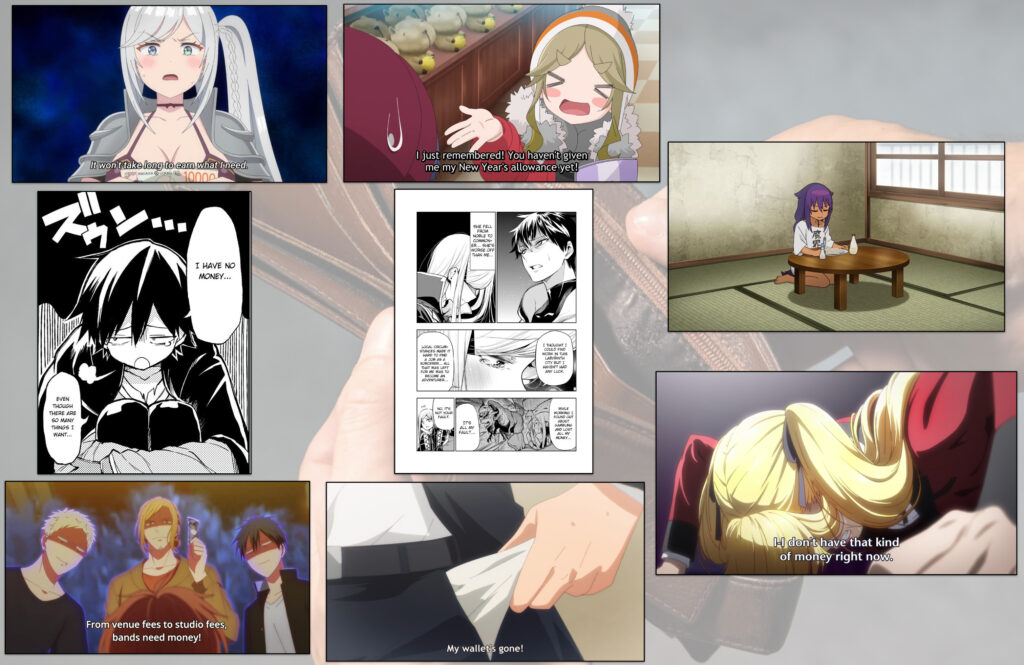
AniManga Picture Challenge Week 18: Shop Till You Drop
This week on the #AniMangaFoundIt #AniMangaPictureChallenge, we took full advantage of every single #anime and #manga holiday sale and Shopped Till We Dropped!
Thanks so much to everyone who participated!
My Little Ponfarr - Bocchi The Rock (and K-On!)
chikorita157 - Magilumiere Magical Girls Inc.
Ragashingo - Macross Frontier
Mole - Yuru Camp
hexer_class - Adachi and Shimamura
Anicast - My Dress-Up Darling
Tatsumeg - Jujutsu Kaisen
AniManga Picture Challenge Week 17: Fancy Feasts
In this week's #AniMangaFoundIt #AniMangaPictureChallenge we got everybody together for some of the biggest meals of the year!
Anicast - The Ancient Magus' Bride
My Little Ponfarr - Komi Can't Communicate
Procrastinasaurus Rex - Urusei Yatsura
chikorita157 - Yuki Yuna Is a Hero
Ragashingo - Summer Wars
CT - Spirited Away
Tatsumeg - I Left My A-Rank Party to Help My Former Students Reach the Dungeon Depths!
Mole - Negative Positive Angler
Thanks so much to everyone who participated!
AniManga Picture Challenge Week 16: Oishii Faces
This week, in the #aniMangaFoundIt #AniMangaPictureChallenge @BongoMcnulty encouraged us to find characters from #anime and #manga making Oishii Faces while enjoying delicious meals.
My Little Ponfarr - Yuru Camp
Nikelui - The Do Over Damsel Conquers the Dragon Emperor
UkeBLCatboy - Yarichin Bitch Club
Maxxy- Love Is War
chikorita157 - I’m In Love With the Villainess Maid Kitchen
socks - Sweetness and Lightning
Ragashingo - Astra Lost in Space
Retro Goth Bunny - Ranma 1/2
Lúmëcolca - Yakitate!! Japan
hexer_class - Bloom Into You
Tatsumeg - Princess Connect Re: Dive
Anicast - You Are Ms. Servant
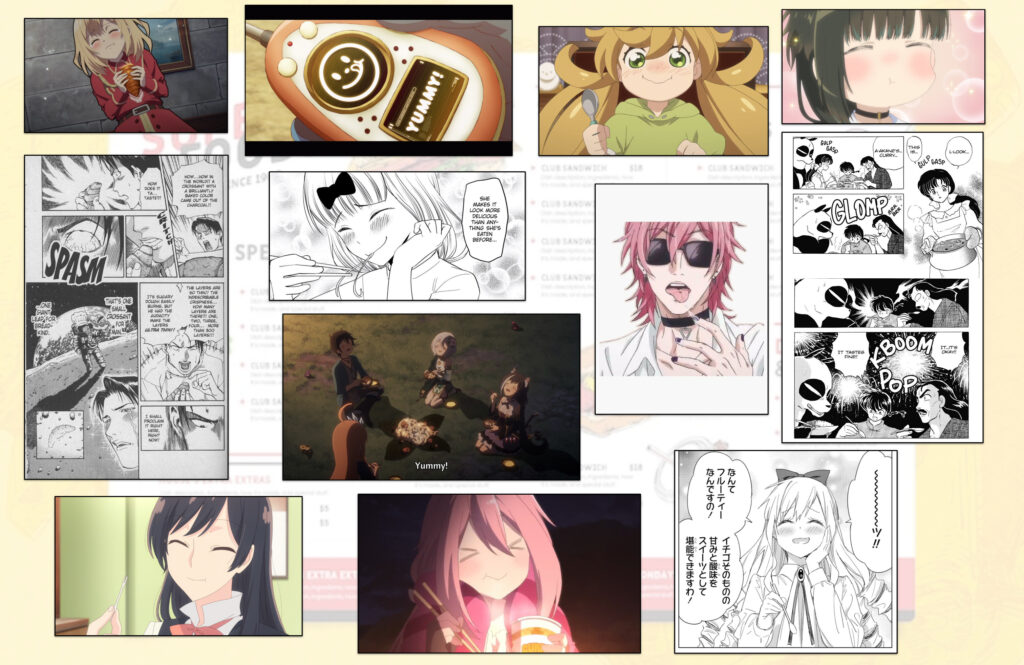
AniManga Picture Challenge Week 15: Everyday Heroes
For this week's #aniMangaFoundIt #AniMangaPictureChallenge, we picked some everyday heroes from #anime and #manga.
My Little Ponfarr - Fire Force
Ragashingo - Police in a Pod
Mole - The Yuzuki Family's Four Sons
Anicast - Shikimori's Not Just A Cutie
Retro Goth Bunny - DanDaDan
Tatsumeg - Planetes
CT - Space Brothers
Thanks to everyone who participated.
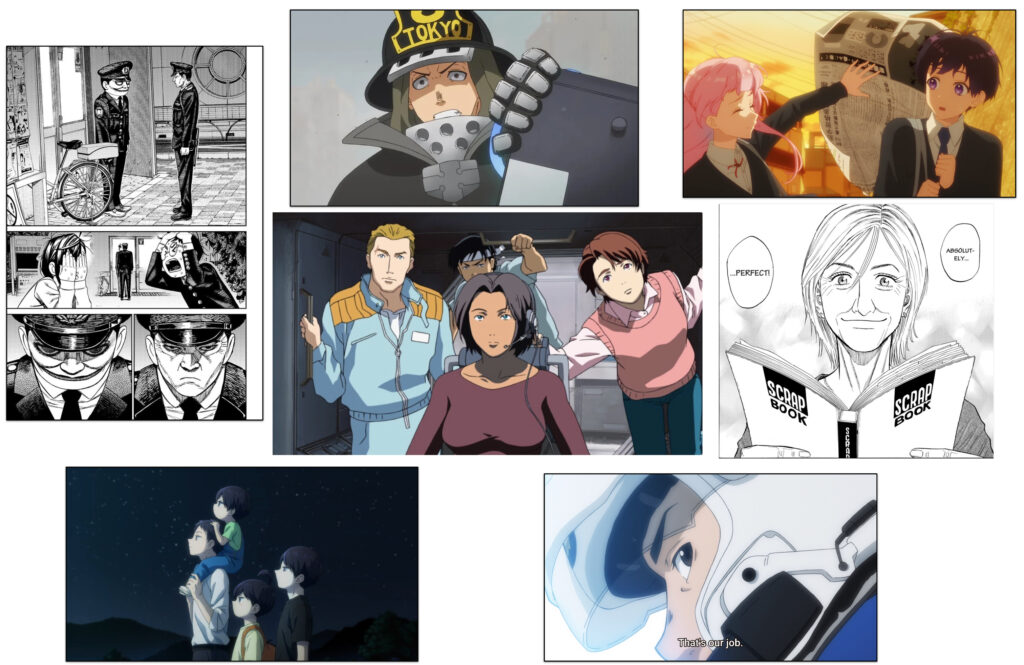
AniManga Picture Challenge Week 14: Politicians
This week on the #animangafoundit #AniMangaPictureChallenge, we looked at #anime and #manga politicians good and bad.
Thanks to everyone who submitted!
Nikelui - The Legend of Koizumi
My Little Ponfarr- Metropolis
Ragashingo - Re:Creators
Anicast - Kiddy Grade
Tatsumeg - Black Bullet
AniManga Picture Challenge Week 13: Scary Monsters
This week the #anime #manga #animangafoundit #AniMangaPictureChallenge featured Scary Monsters! Thanks to everyone who submitted this week!
Retro Goth Bunny - This Monster Wants to Eat Me
My Little Ponfarr - Re:Zero
chikorita157 - Otherside Picnic
Anicast - Bakemonogatari
Ragashingo - Shadows House
socks - Alien Nine
Kimi - Mashle: Magic and Muscles
CT - In/Spectre
Tatsumeg - Noragami: Stray God
AniManga Picture Challenge Week 12: Magical Girls
This week the #AniMangaPictureChallenge #animangafoundit featured Magical Girls!
UKeBLCatboy - Earth Defense Club Love
My Little Ponfarr - Onimai: I'm Now Your Sister!
Anicast - Nisekoi: False Love
hexer_class - Shimeji Simulation
chikorita157 - Is the Order a Rabbit?? 〜Dear My Sister〜
Ragashingo - Puella Magi Madoka Magica
Tatsumeg - The Demon Girl Next Door
Retro Goth Bunny - Is the Order a Rabbit?
it's winter - HeartCatch PreCure!
Jitsch - Wonderful Pretty Cure!
Nikelui - Panty & Stocking with Garterbelt
CT - Magic Knight Rayearth
socks - Witch Hat Atelier
Paul Kemner - Fresh Pretty Cure!









